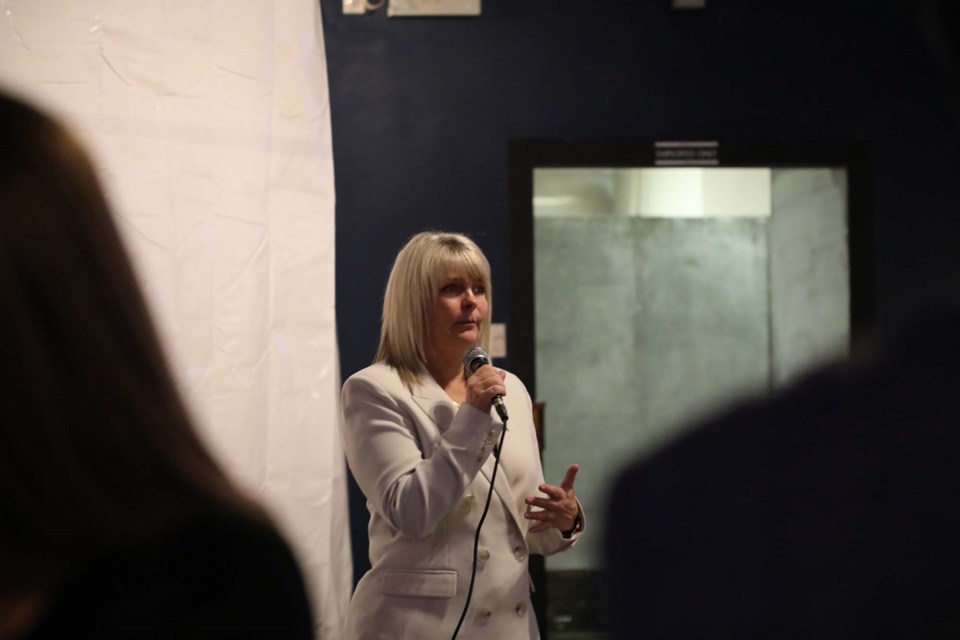St. Albert city council unanimously passed a motion for Mayor Cathy Heron to present council’s position on the proposed name for the newly drawn federal electoral boundary at a public consultation on Tuesday.
The Federal Electoral Boundaries Commission is set to hold a public hearing on proposed boundaries and electoral district names at the St. Albert Inn and Suites on Sept. 13 at 7 p.m.
Heron is set to present a motion that the proposed riding of Sturgeon River be renamed St. Albert-Morinville.
During the Sept. 6 St. Albert city council meeting, Trevor Duley, the city's government relations manager, gave a presentation on the federal electoral boundary review.
“[I] really just wanted to have a discussion with council [and] solicit council's feedback and perspective on the city providing a submission to the commission or not with a menu of options,” he said.
Duley gave council five options, which included support for the proposed boundary and name change as presented; non-support and an ask for a reconfiguration of the boundary; a recommendation to change the name of the proposed boundary to St. Albert-Morinville, St. Albert-Sturgeon; no action from council; or another action of council’s choosing.
During his presentation, Duley said the St. Albert-Edmonton riding as it currently exists contains just over 121,000 people. The proposed Sturgeon River riding would have a population of 114,803.
“The City of St. Albert would comprise just over half of that [population],” said Duley.
St. Albert has a population of about 68,232.
According to data from Duley’s presentation to council, the other municipalities that would make up the proposed Sturgeon River riding include Bon Accord, with a population of 1,462; Legal, with a population of 1,232; Morinville, with a population of 10,385; Onoway, with a population of 966; and portions of Lac Ste. Anne County, Parkland County, and Sturgeon County for a combined population of 30,000.
Coun. Mike Killick asked Duley whether any consultation had been done before the name Sturgeon River was chosen.
“This is the initial opportunity to provide a response to that, so they didn't do any pre-consultation work,” Duley said.
Coun. Shelley Biermanski asked if a name change would serve any value to St. Albert and whether a name change would aid in directing more people where to vote.
Duley said city administration was seeking council's feedback on this, particularly around the nomenclature.
“From my perspective, the majority of the voting electorate would still lie within the City of St. Albert … That's where the majority of the electorate’s located,” Duley said, adding the Electoral Boundaries Commission has suggested the riding be named after the two largest urban centres within the proposed boundaries.
Jesse Sopko, general manager of corporate services at Sturgeon County said the county planned to provide a written submission to the commission.
“[Sturgeon County] council determined that they won’t participate in the hearings, but that they'll provide a written submission to the commission. And that will be supplied by their commission's deadline, [which] is Nov. 1,” said Sopko.
When asked if the county has any concerns with the proposed boundary changes or the proposed name, Sopko said the mayor would provide a letter directly to the commission. Sopko also said, at this time, the county has no public comments.
When pressed about whether there were concerns about the proposed name of Sturgeon River, Sopko said the existing district is Sturgeon River-Parkland.
“The decision to name it Sturgeon River is not a new concept. It's something that's existing,” he said.
Sopko said there is no position on whether the county would like to see Sturgeon County in the name.
“But to note ... I don't think it's common for electoral districts to use names based on municipalities and rural municipalities in particular,” he continued. “Sturgeon County doesn't have a position on the name. And in fact, the work of the commission is on determining the boundaries, so council's submission will be focused on the boundaries of the proposed districts and the four criteria that the commission has set out as things that it's considering as part of its work.”
Neither the St. Albert Chamber of Commerce nor the St. Albert-Edmonton Electoral District Association responded to The Gazette's requests for interviews.
Based on the Constitution of Canada, federal electoral boundaries are required to be reviewed every 10 years. This is done so that any changes in Canada’s population, based on Statistics Canada Census data, is reflected in Canadian Parliament.
Alberta is set to gain three more seats based on Census data from 2021. Under the Electoral Boundaries Readjustment Act, the Electoral Boundaries Commission of Alberta was tasked to divide Alberta into 37 electoral districts.
The Alberta Commission is currently in the process of holding in-person and virtual hearings to gather opinions on the proposed boundaries and electoral district names.
More information on public participation can be found here: https://redecoupage-redistribution-2022.ca/com/ab/phrg/index_e.aspx




